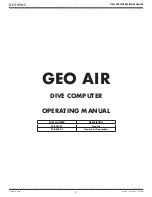
Concepts and features
R&S
®
ZNB/ZNBT
144
User Manual 1173.9163.02 ─ 62
always the number of frequency points involved minus 1. If "Aperture Points" is an odd
number, the part of the aperture towards lower frequencies contains one more fre-
quency step than the part towards larger frequencies.
If the group delay is constant over the considered frequency range (non-dispersive
DUT, e.g. a cable), then τ
g
and τ
g,meas
are identical and:
c
L
t
f
d
t
f
d
mech
g
360
)
360
(
where Δt is the propagation time of the wave across the DUT, which often can be
expressed in terms of its mechanical length L
mech
, the permittivity ε, and the velocity of
light c. The product L
mech
· sqrt(ε) is termed the electrical length of the DUT and is
always larger or equal than the mechanical length (ε > 1 for all dielectrics and ε = 1 for
the vacuum).
4.4
Operations on traces
The R&S
ZNB/ZNBT can perform more complex operations on the measured traces.
Some of the operations, e.g. the time domain transform, require additional software
options; see
Chapter 4.7, "Optional extensions and accessories"
The R&S
ZNB/ZNBT can also check whether the measured values comply with speci-
fied limits and export trace data, using different file formats.
4.4.1
Limit check
A limit line restricts the allowed range for some or all points of a trace, i.e. for a certain
range of stimulus values. Typically, limit lines are used to check whether a DUT con-
forms to the rated specifications (conformance testing).
●
An upper limit line defines the maximum allowed values for the related stimulus
range.
●
A lower limit line defines the minimum allowed values for the related stimulus
range.
●
A ripple limit defines the maximum difference between the largest and the smallest
response value for the related stimulus range. A ripple limit test is suitable, e.g., to
check whether the passband ripple of a filter is within acceptable limits, irrespective
of the actual transmitted power in the passband.
●
A circle limit defines the acceptable values as a circular area within a complex dia-
gram.
A limit check compares the measurement results to the limit lines, and displays a pass/
fail indication.
A TTL signal at the rear panel User Port (for test automation) can be generated in addi-
tion, if a limit is violated.
Operations on traces
















































